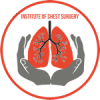A pneumothorax, often referred to as a collapsed lung, is a potentially life-threatening medical condition that requires immediate attention. This article delves into the question of whether a pneumothorax is a medical emergency and emphasizes the significance of prompt diagnosis and treatment. Understanding the causes, symptoms, and risk factors associated with pneumothorax can aid in recognizing its severity and seeking timely medical care.
What is Pneumothorax?
A pneumothorax occurs when air accumulates in the pleural space, the area between the lung and the chest wall. This buildup of air can lead to partial or complete lung collapse, disrupting the lung’s ability to expand fully during respiration. Depending on the extent of the collapse, a pneumothorax can be classified as a partial or complete pneumothorax.
Types of Pneumothorax:
- Primary Spontaneous Pneumothorax:
- Occurs in people without any underlying lung conditions or trauma.
- Typically affects young, tall, and slender individuals.
- Secondary Pneumothorax:
- Arises as a complication of underlying lung diseases such as chronic obstructive pulmonary disease (COPD), asthma, or tuberculosis.
- Can also be caused by chest injuries, medical procedures, or mechanical ventilation.
- Traumatic Pneumothorax:
- Caused by a direct injury to the chest, such as from a car accident, a fall, or a penetrating wound.
- Common in cases of rib fractures that puncture the lung.
Symptoms of Pneumothorax:
The symptoms of a pneumothorax can vary depending on its size and underlying cause. Some common signs to watch out for include:
- Sudden, sharp chest pain, often on one side.
- Shortness of breath or difficulty breathing.
- Rapid heart rate.
- Cyanosis (bluish discoloration of the skin) due to inadequate oxygenation.
- Shallow or rapid breathing.
- Chest tightness or discomfort.
Is Pneumothorax a Medical Emergency?
Yes, a pneumothorax is considered a medical emergency that requires immediate attention. When a pneumothorax occurs, the lung is unable to function optimally, leading to reduced oxygen exchange and potential respiratory distress. The condition can rapidly worsen, causing severe complications, including a tension pneumothorax, which is life-threatening.
Tension Pneumothorax:
A tension pneumothorax is a critical condition that arises when air continues to accumulate in the pleural space without a means of escape. This causes increasing pressure on the affected lung and can shift the heart and major blood vessels, compromising circulation. Tension pneumothorax can rapidly lead to shock, cardiac arrest, and death if left untreated.
Risk Factors for Pneumothorax:
Certain factors may increase the risk of developing a pneumothorax:
- Smoking: Individuals who smoke or have a history of smoking are at a higher risk of primary spontaneous pneumothorax.
- Lung Diseases: People with pre-existing lung conditions like COPD or cystic fibrosis are more susceptible to secondary pneumothorax.
- Age and Gender: Young, tall, slender men are more prone to primary spontaneous pneumothorax.
- Chest Injuries: Traumatic events, such as chest trauma from accidents or falls, can lead to pneumothorax.
- Medical Procedures: Certain medical procedures, such as lung biopsies or mechanical ventilation, can trigger pneumothorax in vulnerable individuals.
Diagnosis of Pneumothorax:
Prompt diagnosis of pneumothorax is essential for timely intervention. The following diagnostic tests are commonly used:
- Chest X-ray: The most common imaging test to confirm the presence and extent of a pneumothorax.
- Computerized Tomography (CT) Scan: Provides detailed cross-sectional images of the chest to detect small pneumothoraces or assess underlying lung conditions.
- Ultrasound: Used at the bedside to detect pneumothorax, especially in emergency situations.
Treatment of Pneumothorax:
The approach to treating a pneumothorax depends on its size, severity, and underlying cause. The primary goal of treatment is to remove the trapped air and allow the lung to re-expand.
- Observation: Small, asymptomatic pneumothoraces may be monitored without intervention, especially if the patient is stable and the risk of progression is low.
- Aspiration or Needle Decompression: In cases of moderate-sized pneumothoraces with symptoms, a needle may be inserted into the pleural space to remove the excess air (aspiration).
- Chest Tube Insertion: For larger pneumothoraces or those that do not resolve with aspiration, a chest tube may be inserted to drain the air and re-establish normal lung function.
- Surgery: In recurrent or severe cases, surgical procedures like video-assisted thoracoscopic surgery (VATS) or thoracotomy may be necessary to repair the lung and prevent further pneumothoraces.
Conclusion
In conclusion, pneumothorax is indeed a medical emergency that demands immediate attention. Prompt diagnosis and timely treatment are crucial for preventing complications and ensuring the best possible outcome for the patient. It is essential to recognize the symptoms of pneumothorax and seek medical help without delay, particularly if there is a history of lung disease, recent chest trauma, or difficulty breathing. By understanding the seriousness of pneumothorax and acting swiftly, we can save lives and provide the necessary care for those affected by this potentially life-threatening condition.
Remember, the information provided here is for educational purposes only and should not be considered a substitute for professional medical advice. If you suspect a pneumothorax or any other medical emergency, seek immediate medical attention.






